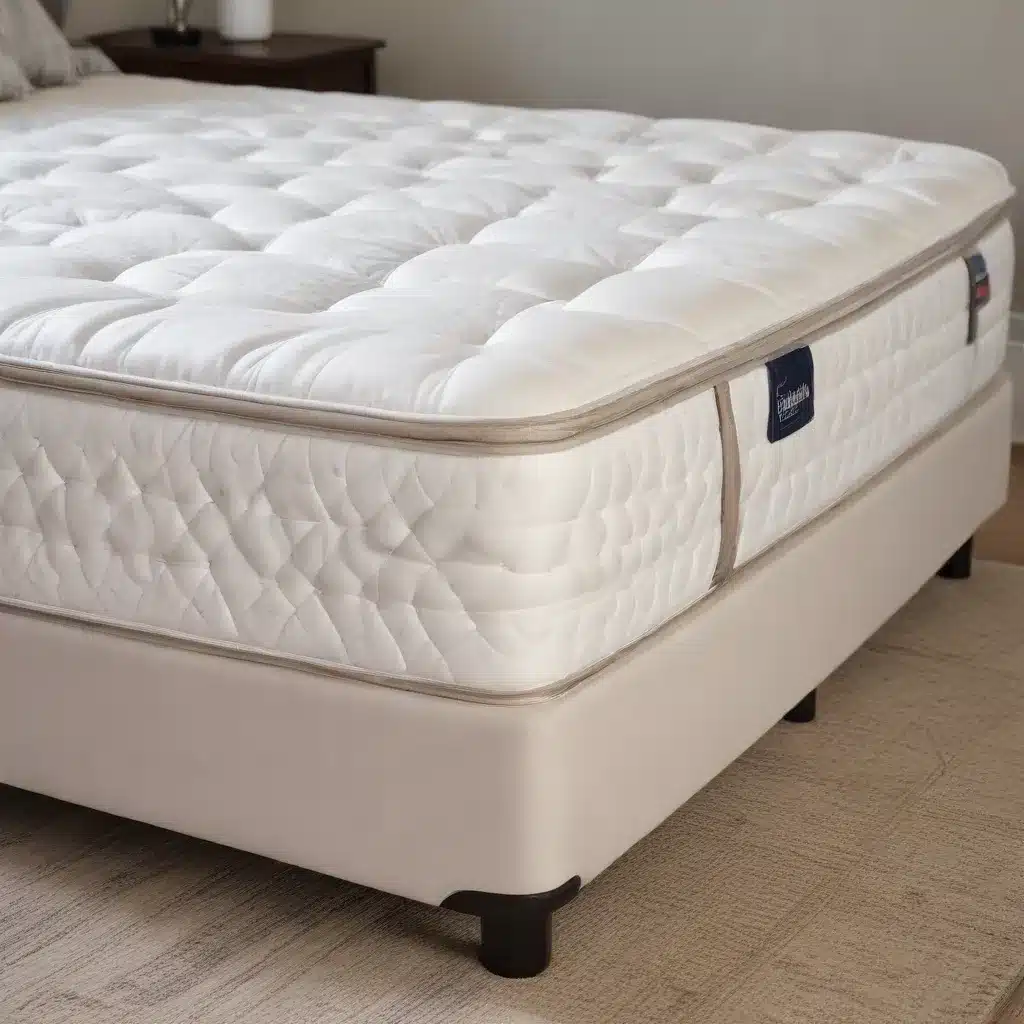
Mattress Maintenance Made Easy: Tips and Tricks for Extending Lifespan
Unlock the Secrets to a Long-Lasting, Comfortable Mattress
As an experienced carpet and upholstery cleaning specialist, I’ve seen it all when it comes to keeping household surfaces in top condition. But one area that often gets overlooked is mattress maintenance – an essential component of healthy sleep hygiene. In this comprehensive guide, I’ll share my best tips and tricks for extending the lifespan of your mattress, ensuring you get the most value and comfort out of your investment.
Protecting Your Mattress: The Power of Mattress Protectors
The foundation of any great mattress maintenance routine is a trusty mattress protector. These unsung heroes act as a barrier between you and your mattress, shielding it from all manner of spills, stains, and bodily fluids. Not only do they help preserve the appearance and cleanliness of your mattress, they can also prevent damage that may void your warranty. When selecting a mattress protector, opt for a durable, high-quality option that will stand up to regular use and washing.
For maximum protection, I recommend an encasement-style protector that zips completely around the mattress. These create a sealed barrier that keeps out dust mites, bedbugs, and other allergens. Fitted protectors that wrap like a fitted sheet work well too, but the encasement variety offers an extra layer of defense. And don’t forget to regularly wash your mattress protector – this helps maintain its efficacy and keep your sleeping surface fresh.
Rotate, Flip, Repeat: Ensuring Even Wear
Proper mattress rotation and flipping is key to maximizing its lifespan. Most manufacturers recommend flipping or rotating your mattress every few months to prevent premature sagging or impression marks. This ensures the materials wear evenly over time. Some mattress types, like memory foam, may not need to be flipped, but rotating is still advisable.
Pay close attention to the instructions from your mattress manufacturer – they’ll provide guidance on the ideal rotation schedule for your specific model. And be mindful of your sleeping habits too. If you tend to favor one side of the bed, make sure to rotate the mattress accordingly to distribute wear and tear.
Stain-Busting Strategies
Accidents happen, even in the bedroom. When spills or stains do occur on your mattress, acting quickly is crucial. Blot up excess moisture with a clean, absorbent cloth, then treat the area. For lighter stains, you can try a simple solution of lemon juice and salt. Just make a paste, rub it in, let it sit for 30-60 minutes, then blot clean.
Darker mattress colors may require a different approach, as lemon can cause bleaching. In those cases, try a mix of water, dish soap, and baking soda. This natural concoction will help lift the stain without damaging your mattress. Avoid using harsh chemical cleaners, as they may compromise the integrity of the materials.
Controlling Critters: Protecting Against Infestations
Pets are part of the family, but their presence can introduce some unwanted guests into your sleeping sanctuary. Parasites like roundworms can hitch a ride on your furry friends and then transfer to your bedding. To avoid a full-blown infestation, it’s best to designate a separate sleeping spot for your pets, keeping them off the mattress.
Beyond pet-related issues, vigilance is also required when it comes to bedbugs. These resilient pests can infiltrate your home through secondhand furniture, used clothing, or even on your person after traveling. Using an encasement mattress protector is one of the best defenses against bedbugs, as it creates a barrier they can’t penetrate. Regularly inspecting your mattress and surrounding areas for signs of bedbugs is also advisable.
Freshen Up: Maintaining Odor Control
Over time, mattresses can accumulate unpleasant odors from sweat, dust, and other sources. Sprinkling baking soda over the surface every few months can help neutralize these smells. Let it sit for a bit before vacuuming it up, and your mattress will be left feeling fresh and revitalized.
For an extra aromatic boost, you can also incorporate essential oils into your baking soda mixture. Lavender, for example, offers a calming, sleep-promoting scent. Just be sure to spot-test any oils first to ensure they don’t discolor or stain the mattress fabric.
Mattress Lifespan: When Is It Time to Replace?
While proper maintenance can significantly extend the life of your mattress, eventually the time will come to invest in a new one. Most innerspring mattresses have a lifespan of 5-7 years, while foam and hybrid models tend to last 6-10 years on average. Look for signs of wear, like uneven sagging, noticeable body impressions, or a general lack of support. If you find yourself waking up with aches and pains, that’s a clear indication it’s time for an upgrade.
Consulting your mattress warranty can also provide helpful guidance on when replacement is recommended. And don’t forget to consider the material – latex mattresses generally have the longest lifespan of 10-20 years. Ultimately, listen to your body and replace your mattress when it’s no longer providing the comfort and support you need.
Caring for Your Mattress: A Holistic Approach
Maintaining a clean, well-cared-for mattress is about more than just aesthetics – it’s crucial for your overall health and wellbeing. Quality sleep is the foundation of physical and mental wellness, and a supportive, long-lasting mattress is essential for achieving that.
By incorporating these simple yet effective mattress maintenance strategies into your routine, you’ll not only extend the life of your investment, but you’ll also create a healthier, more restful sleeping environment. So why wait? Start optimizing your mattress care today and experience the transformative power of a good night’s sleep.



